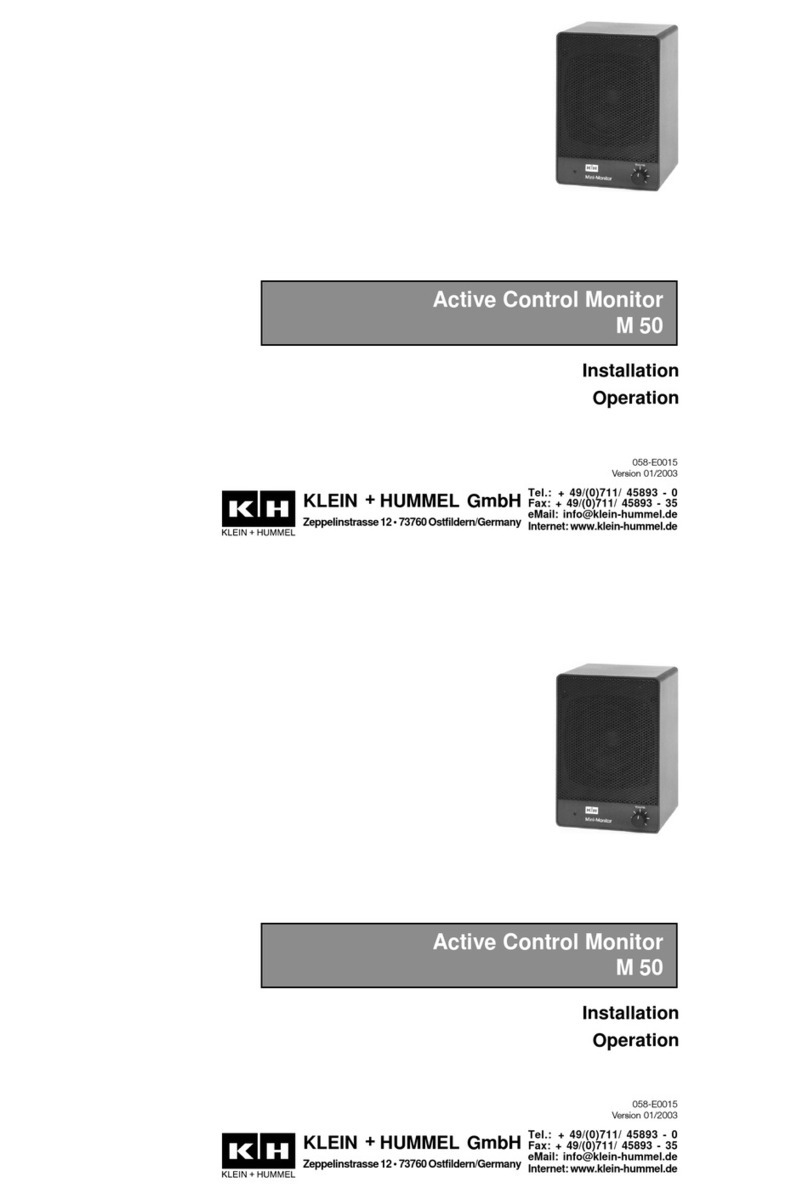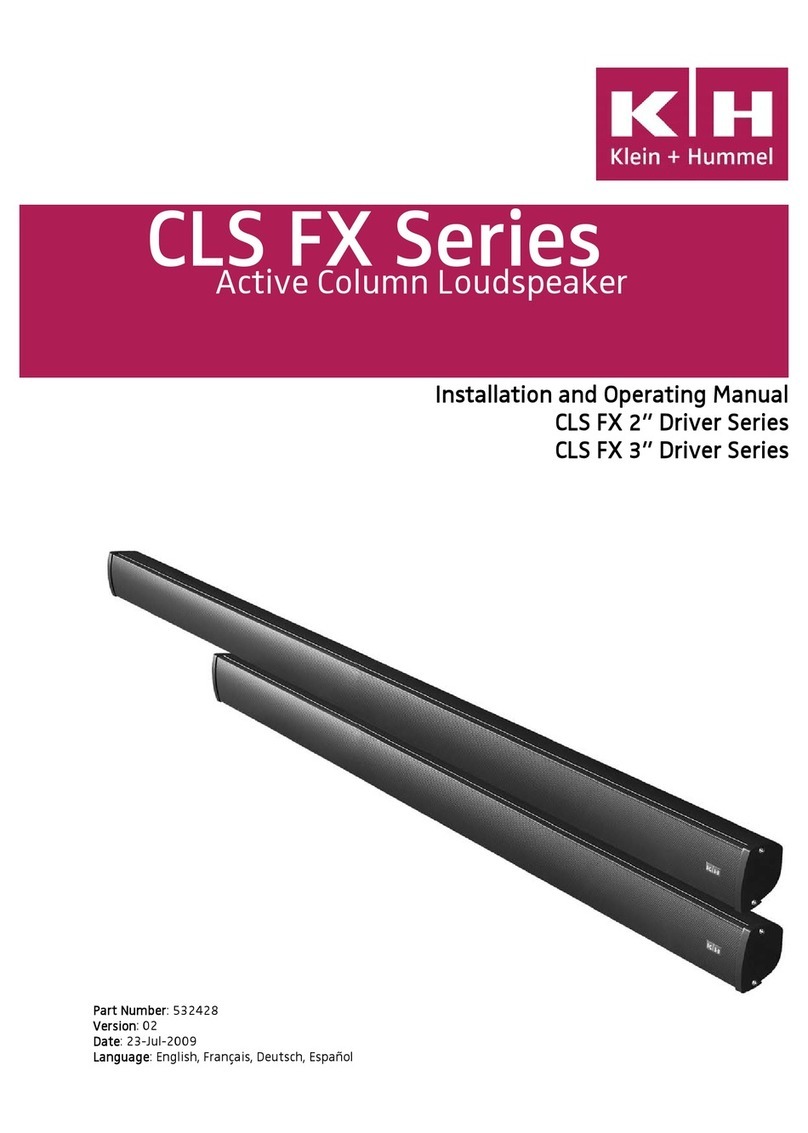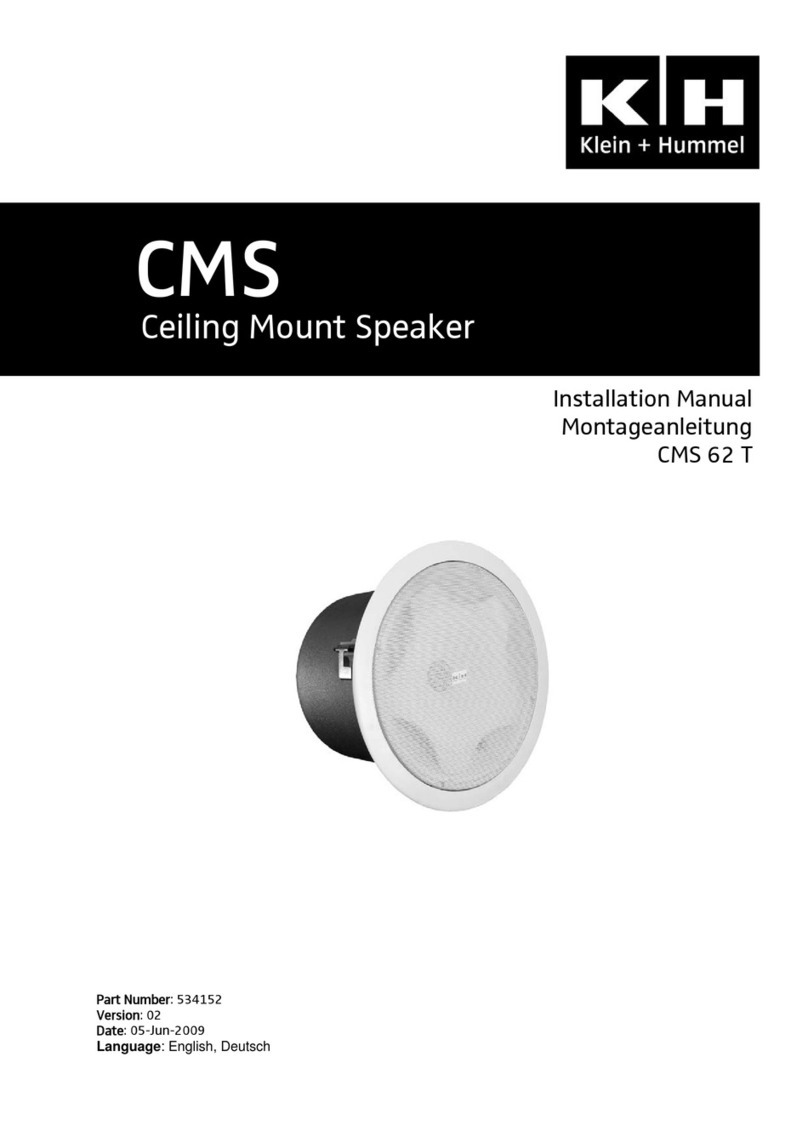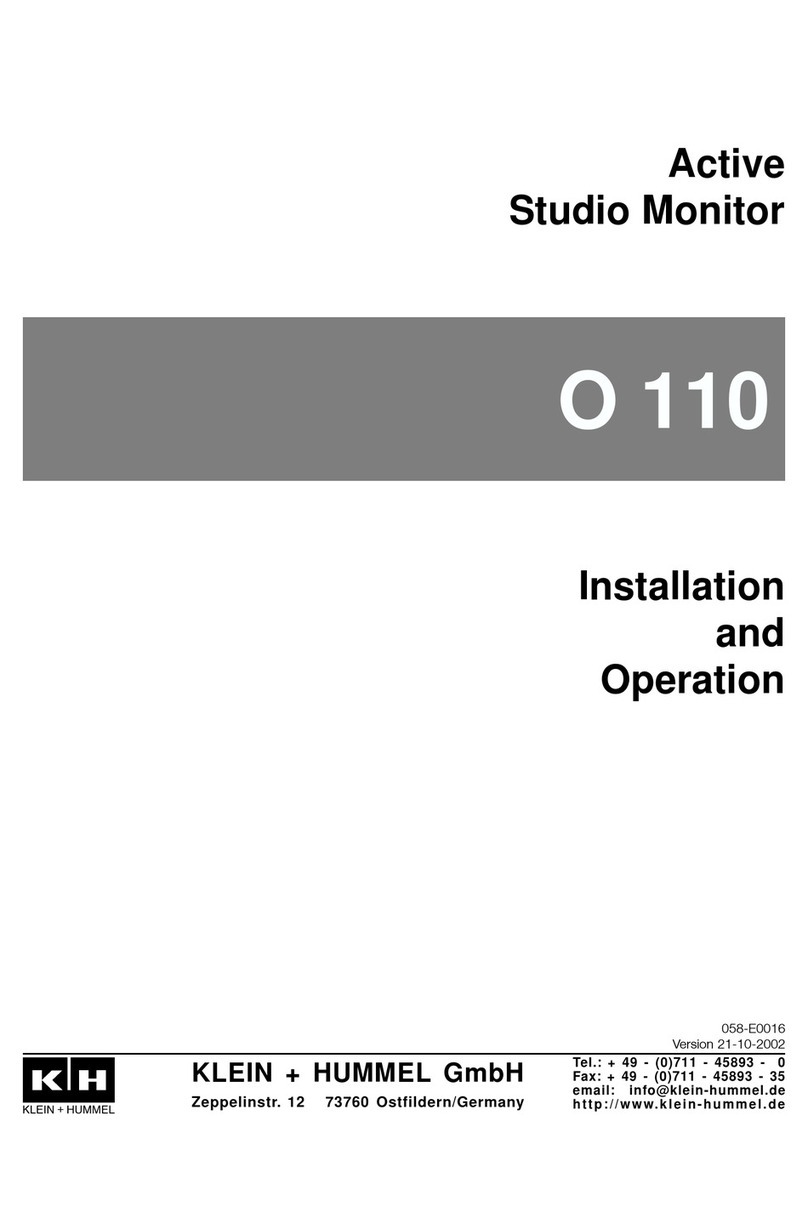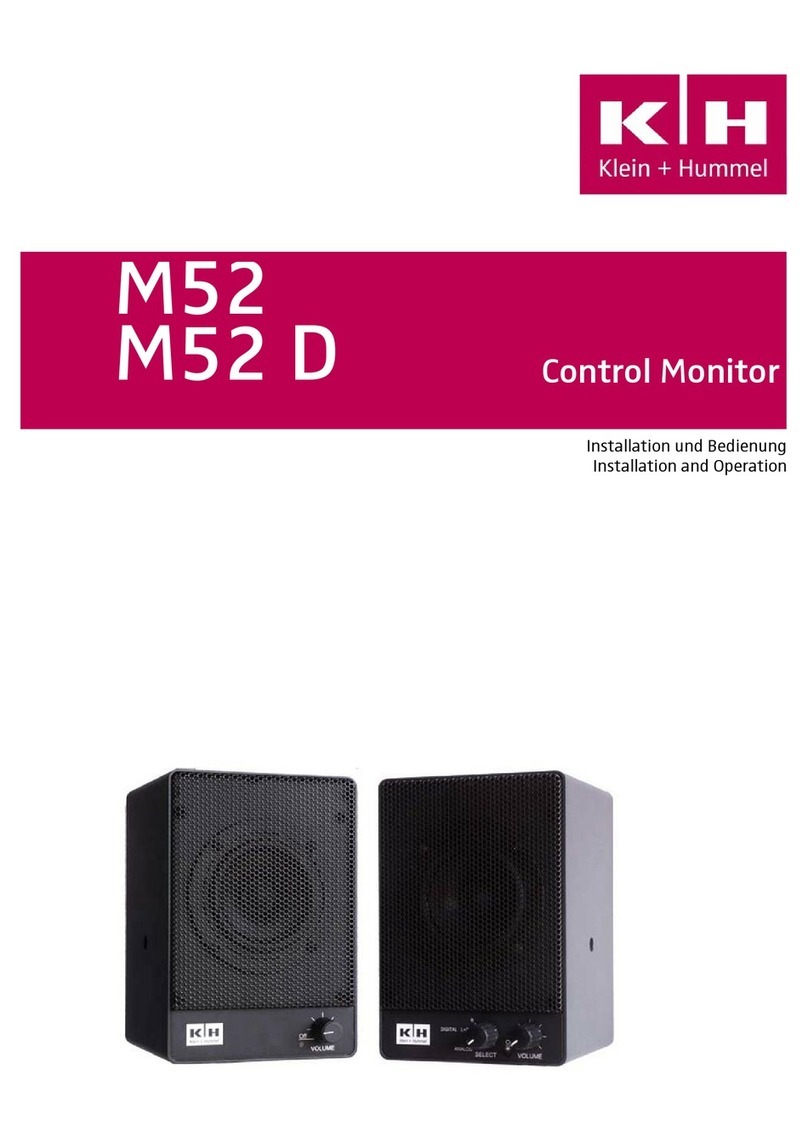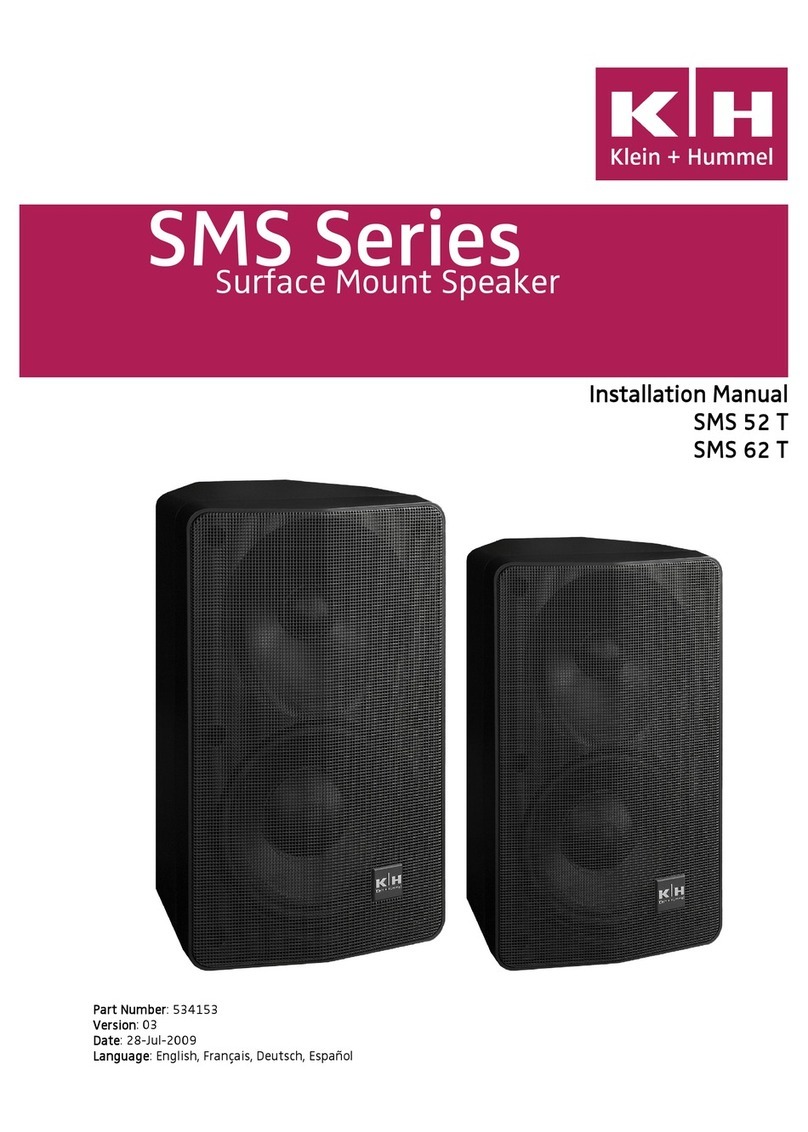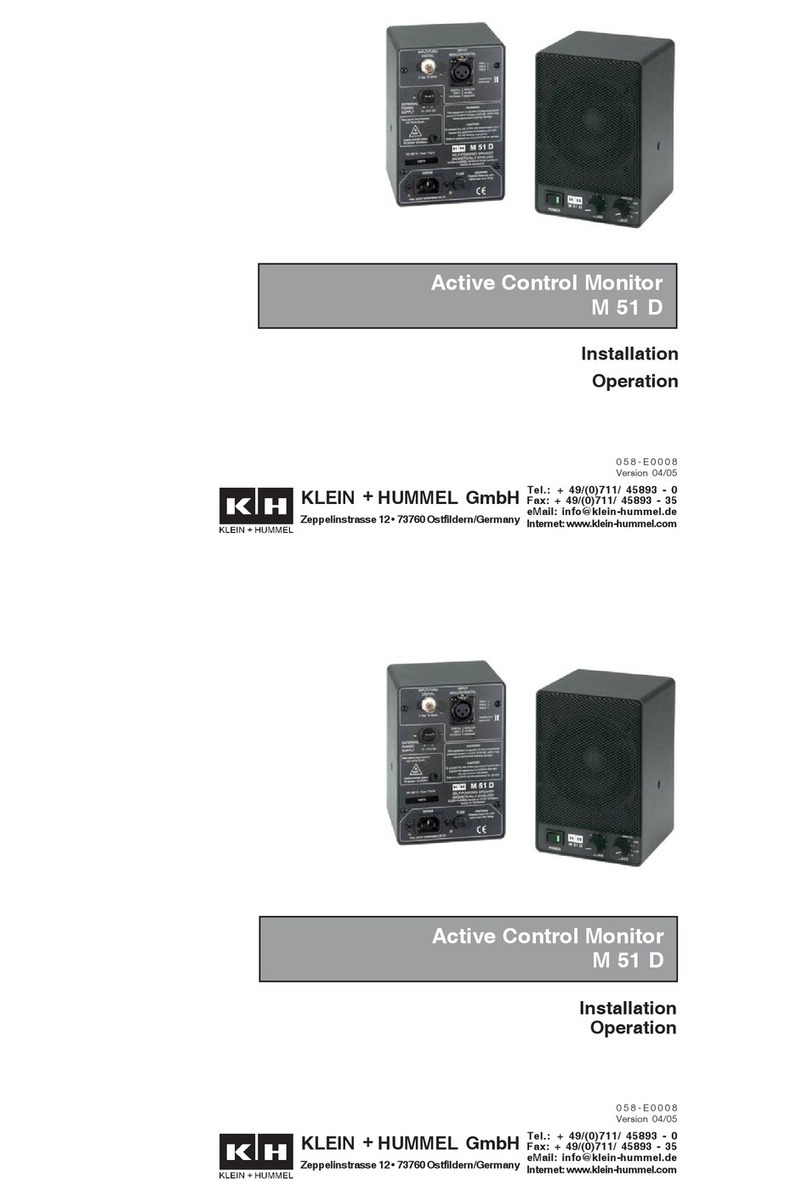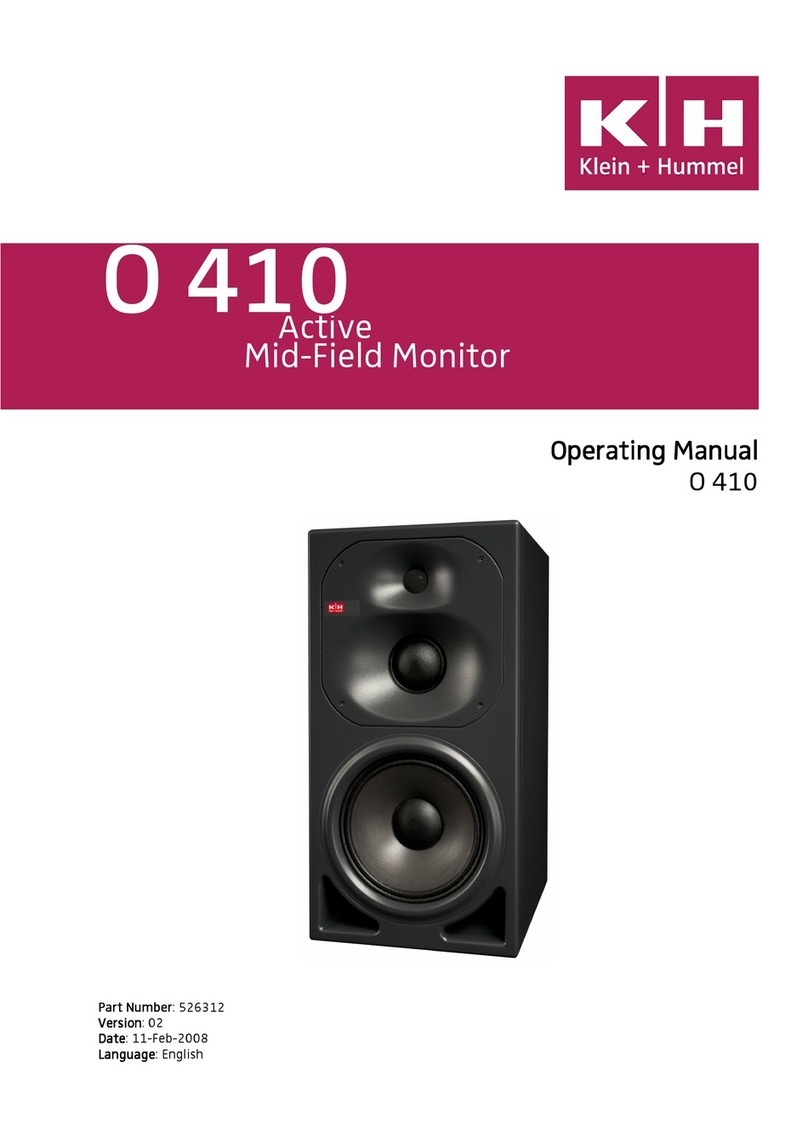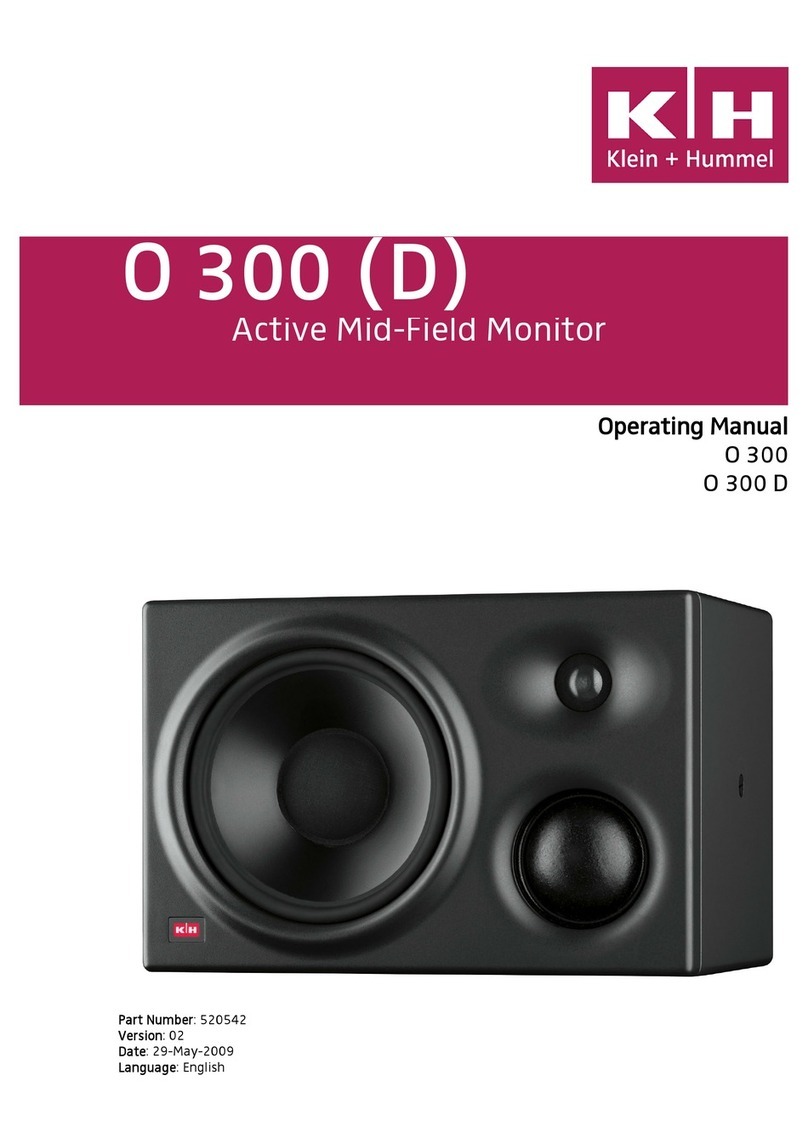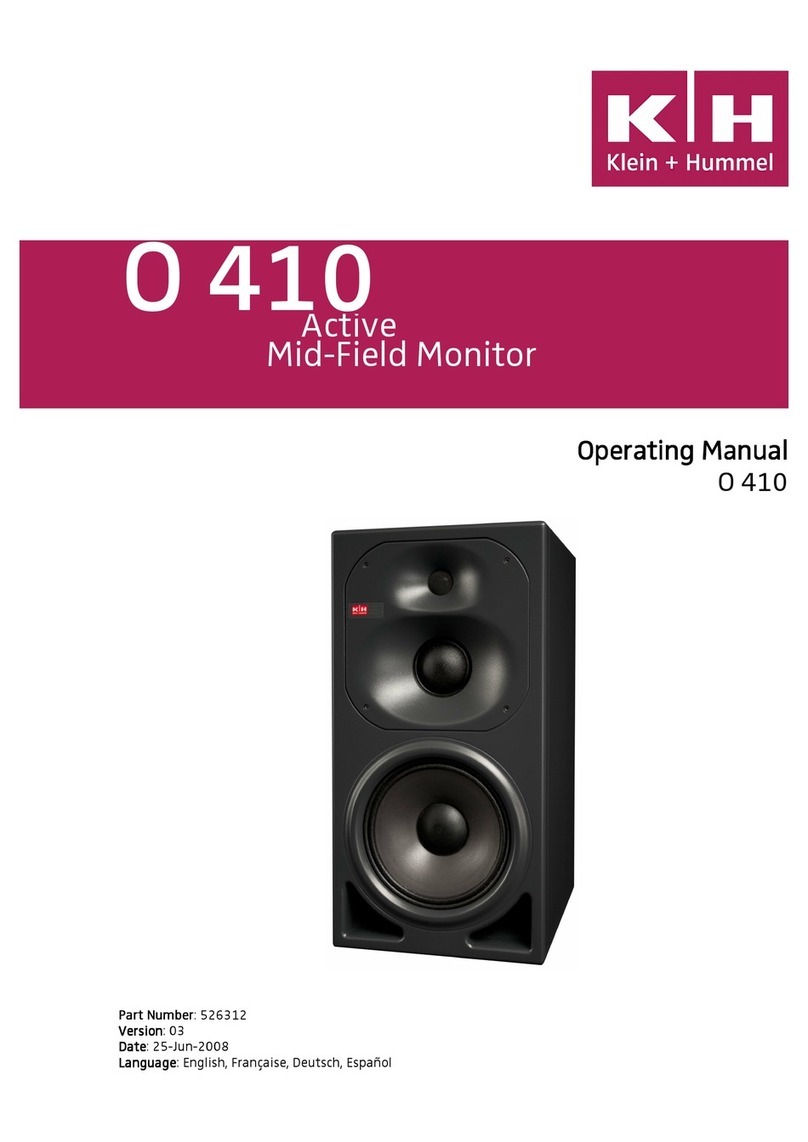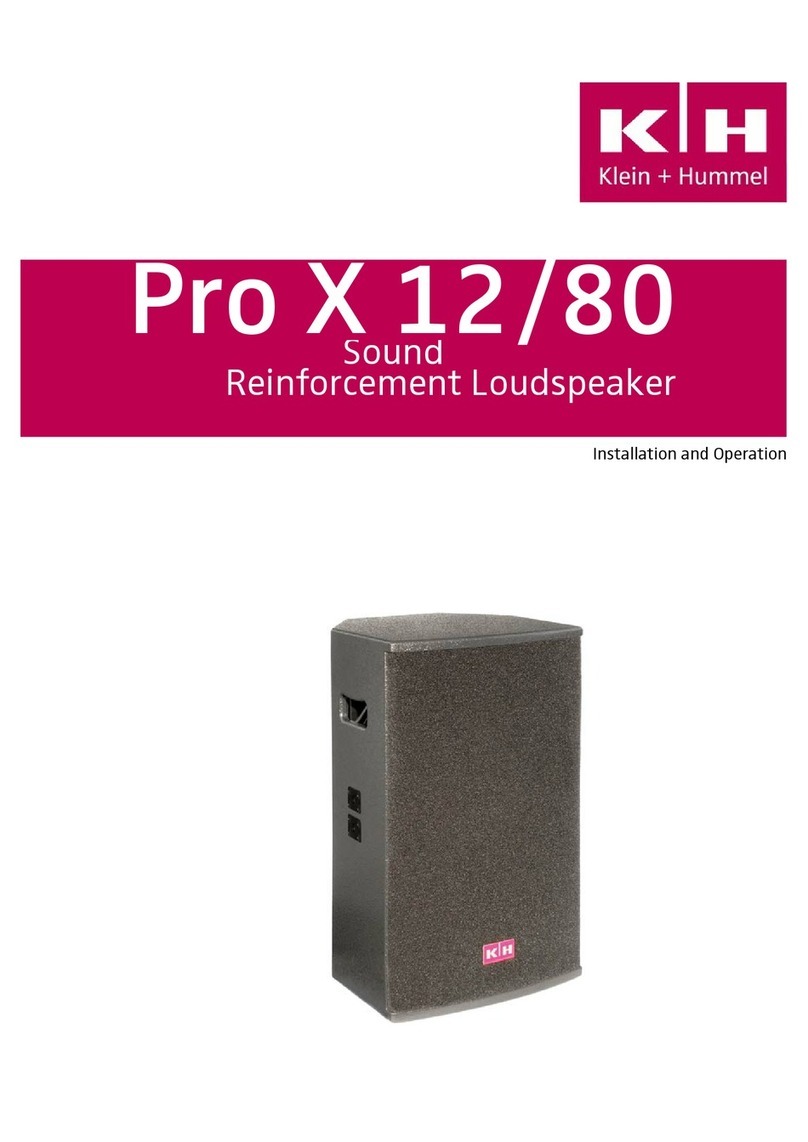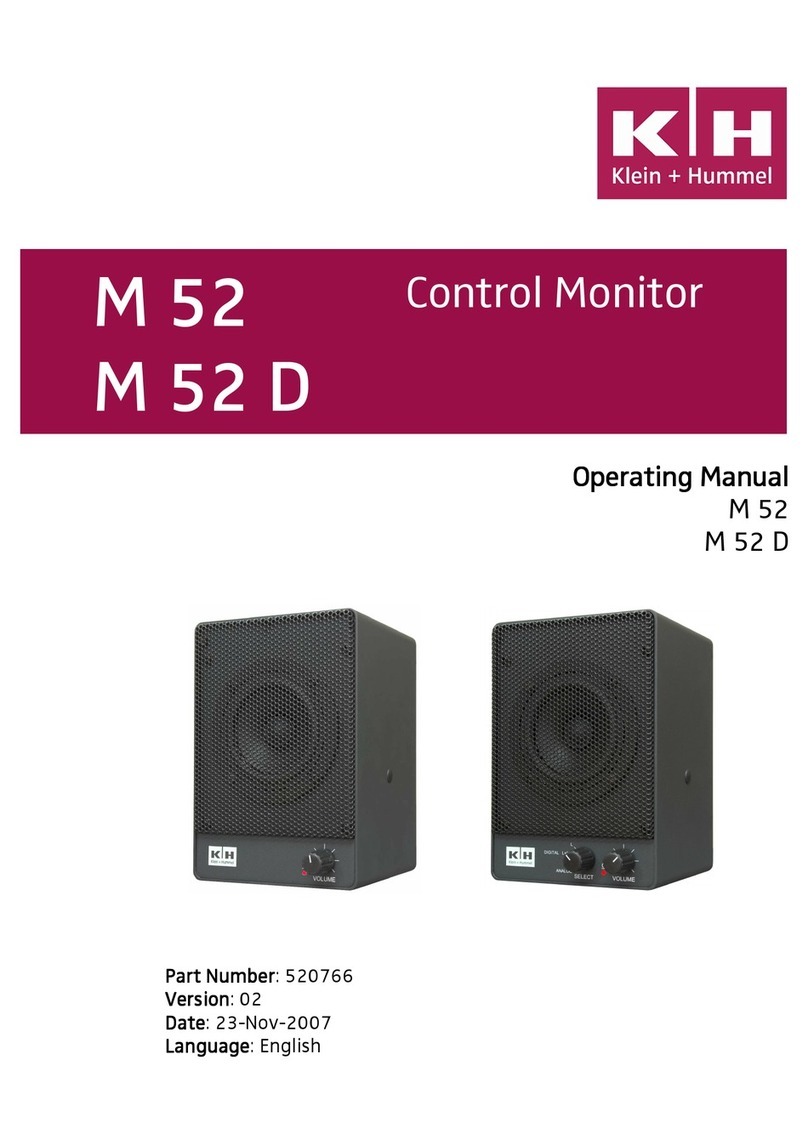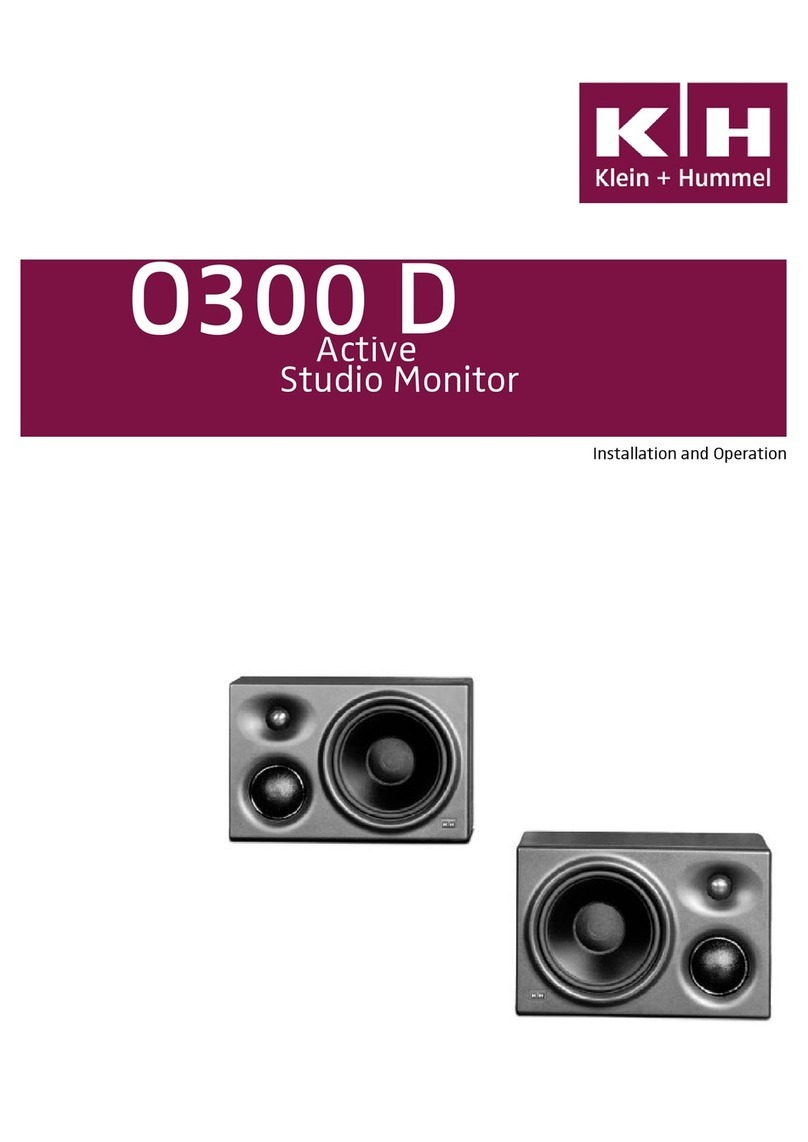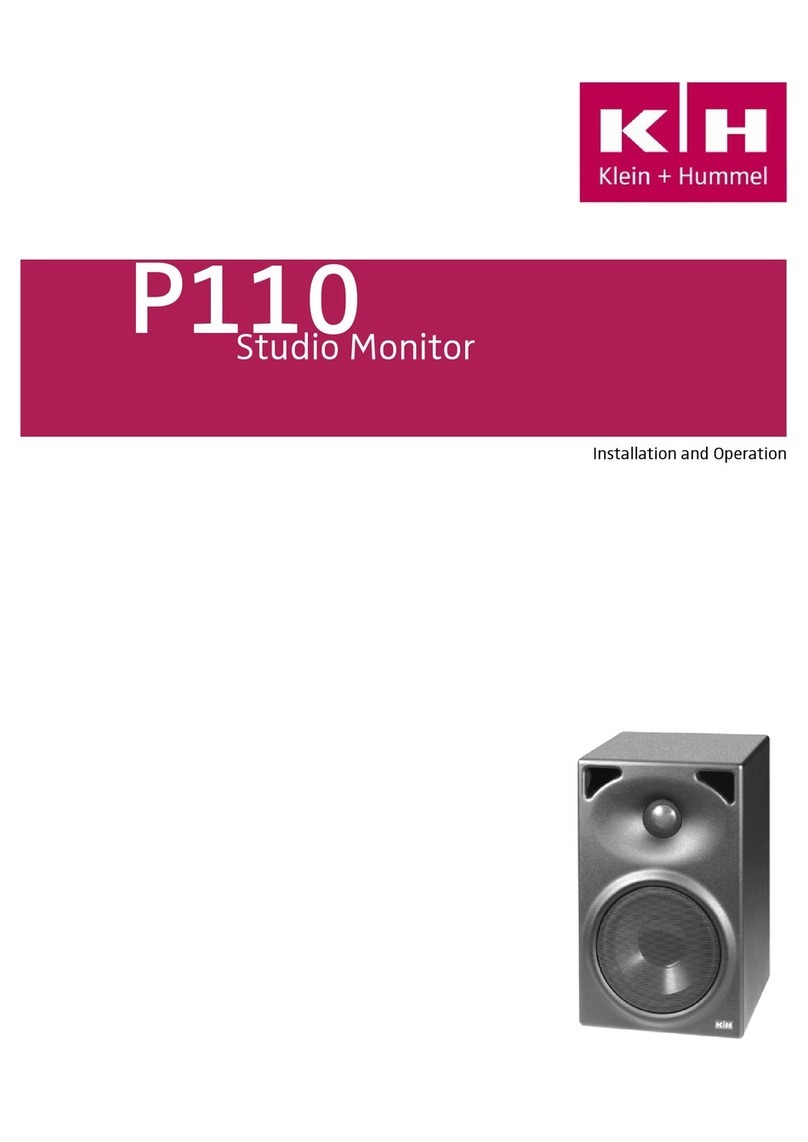Page4 Active Studio Monitor O 200
1. Installation and Operation
Itisabsolutelyessentialthatyoureadandobserve
theSafety Instructionsonpage 2beforeconnecting
or using this device.
1.1 Operating conditions
TheK+HmodelO200activestudiomonitorisintended
for use over a range of ambient temperatures from
+10°Cto+40° C(+50° Fto+104°F).Duringtransport
orstorage, temperaturesfrom -25°C to +70° C (-13°
F to 158° F) are permissible.
1.2 Speaker placement
The loudspeaker chassis used in the O 200 are
magnetically shielded, so you are free to set the
speakersrightnextto a videomonitorwithoutneeding
to worry about adversely affecting the screen.
Furthermore, the baffle of the O 200 is designed in
such a way as to disperse the sound very evenly not
just on axis but over quite a wide listening area. Any
engineer who has sat at a console for any length of
time will appreciate the considerable freedom of
movement afforded by the O 200. The cabinet is
normallydesignedto beused inthe verticalposition,
notonlyfor acousticreasonsbutalso forbestcooling.
On the left and right sides of the cabinet you will find
threaded bushings of 8 mm diameter to which the
K+H - bracket LH 26 can be attached. As an alterna-
tive, you can use the LH 28 stand-mount adapter in
combination with LH 26 to set the speaker on a
standard35-mm(1-3/8”) tripodortheLH 29(+LH 26)
TV spigot.
Please make certain that the two threaded openings
are always sealed, either with the plastic plugs that
come standard with the cabinets or with the screws
holdingthemounting adapterinplace. Otherwise you
may experience some air noise and possibly some
degradation in low-frequency response. The same
happensif theplasticplugs ontherear side,covering
theopenings for service, are removed.
1.3 Mains Connection
The amplifier electronics of the standard European
model are set up for an AC line voltage of 230 volts,
50 or 60 Hz.Export versions with other voltages are
also available. If the power plug of the mains cable
should ever need to be replaced, ensure that the
connection to the protective earth is maintained.
1.4 Mains Switch (POWER)
Whenyouswitchon power totheunit,thereis a three-
second delay before the amplified signal is sent to
thedrivers.Thisdelayavoidstheloudpopping sounds
thatotherwisemay begeneratedby devicesearlierin
the signal chain as power reaches them.You will find
thisarrangementparticularlyusefulif your studio uses
amasterswitchtopowerup allthe equipmentatonce.
When power on the O 200 is turned off, on the other
hand, or if there is a general power failure, the signal
flowto thespeaker isimmediately cutoff, preventing
any loud pops.
1.5 Mains FUSE
Whenreplacingthe fuse, firstdisconnectthe mains
cable andensure thatthenew fuseisof thefollowing
type only:
for 230 V AC 1 A Slo-Blo (5 x 20 mm)
for 117 V AC 2 A Slo-Blo (5 x 20 mm)
for 100 V AC 2.5 A Slo-Blo (5 x 20 mm)
1.6 INPUT,EQUALIZATION,GROUND LIFT
The sensitivity of the transformer balanced and
floating input is rated at +6 dBu (1.55 volts). The
three - pole female XLR jack is wired in the
standard manner (pin 1 = ground, pin 2 = +,
pin 3 = negative). If you are connecting unbalanced
sources,youwillneed to solderabridgebetweenpins
1 and 3:
unbalanced balanced
as seen from solder terminals of male XLR
Figure 3: Pin layout of input connector
Next to the input connector the level controls, the
location equalizer and the ground - lift switch are to
befound. Foravoidingunwanted setting,acover has
to be removed first.
1.6.1 Input SENSIVITY, ATTENUATOR
NeartheAF-input-socketthereareacontinuously
variable attenuator 0...-24 db and a switch for
selecting 0 dBu (0.775 V) or +6 dBu (1.55 V)
sensivity.
1.6.2 Location EQUALIZATION
Afour positionrecessed rotaryswitch (adjustable
with a screwdriver) is available for frequency
compensation due to speaker placement. For
equalizinganomaliesin thelowerfrequenciesdue
to proximity to room boundaries:
Position 0 = free space
Position-2.5 = 1boundary (wall)
Position-5 = 2boundaries(corner)
Position-7.5 = 3boundaries (corner+ ceiling)
